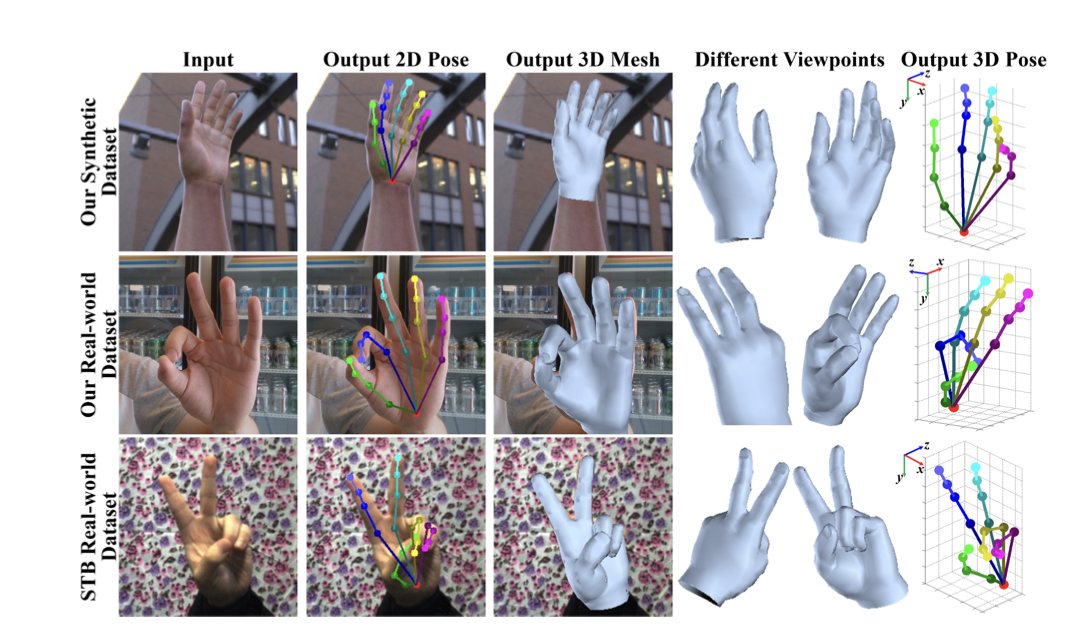Research:

Ground truth 3D meshes and 3D postures were included in a sizable synthetic dataset that was produced by State University of New York at Buffalo researchers. They presented a weakly-supervised method by using the depth map as a weak supervision in training while fine-tuning the networks on real-world datasets without 3D ground truth. They demonstrate that their suggested method can build accurate and appropriate 3D hand mesh and can accomplish superior 3D hand pose estimate accuracy when compared with state-of-the-art methods through thorough evaluations on their proposed new datasets and two public datasets.

A learning-based method for reconstructing the 3D geometry of the human head from a single portrait shot was demonstrated by Tsinghua University researchers. To learn 3D head reconstruction from in-the-wild face photos, a two-step geometry learning scheme is suggested. First, face shape is learned on single images using self-reconstruction, and then hair and ear geometry is learned using pairs of images in a stereo-matching manner. They tested the precision of their system using pose-alteration tasks on 2D and 3D images. Their novel method can yield results that are highly accurate in terms of 3D head geometry and head posture modification, according to extensive assessments and comparisons with earlier approaches.
Open Source News:

A new study by software supply chain security management firm Lineaje has revealed that 82% of open-source software components are "inherently risky" as a result of a variety of flaws, security problems, poor code quality, and maintainability issues. According to the paper, even though more than 70% of enterprise software is open source, these components are frequently not tracked, maintained, updated, or inventoried, exposing significant loopholes in the software supply chain that threat actors might take advantage of.

Stability AI, the company behind the well-known image-generation tool Stable Diffusion, has introduced a set of open-source language-model tools, adding to the growth of the large-language-model market.The publicly accessible alpha versions of the StableLM suite, which has models with 3 billion and 7 billion parameters, are now available. Models with 15 billion, 30 billion, and 65 billion parameters are listed as "in progress," while a model with 175 billion parameters is slated for future development.
Download Checkpoint Free Today!